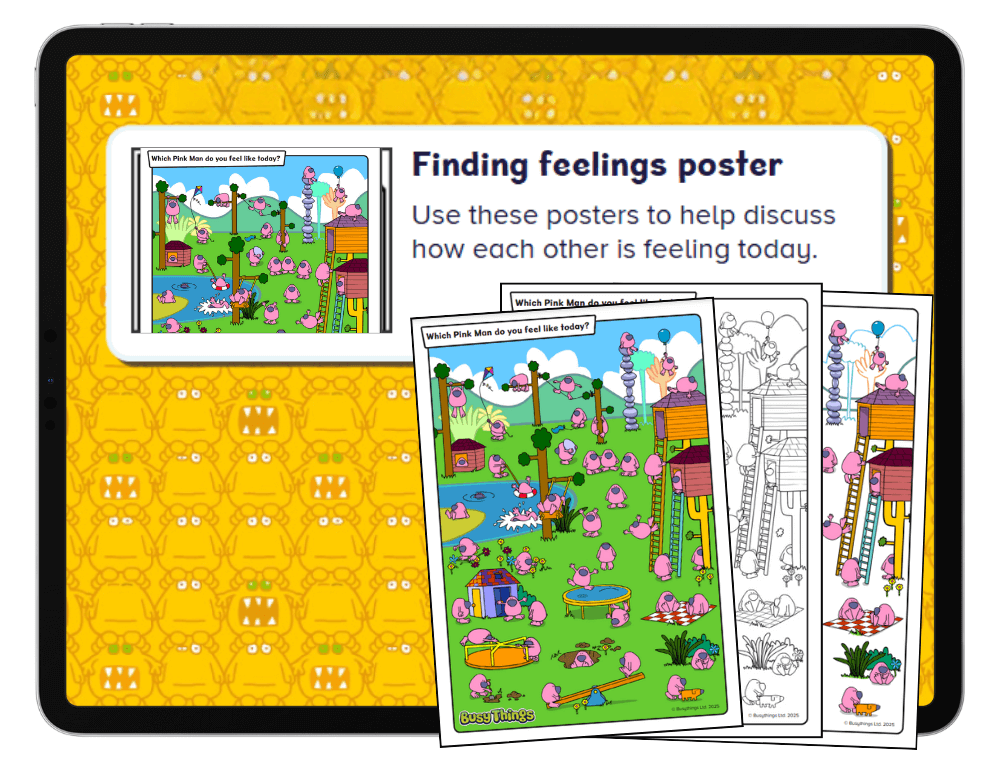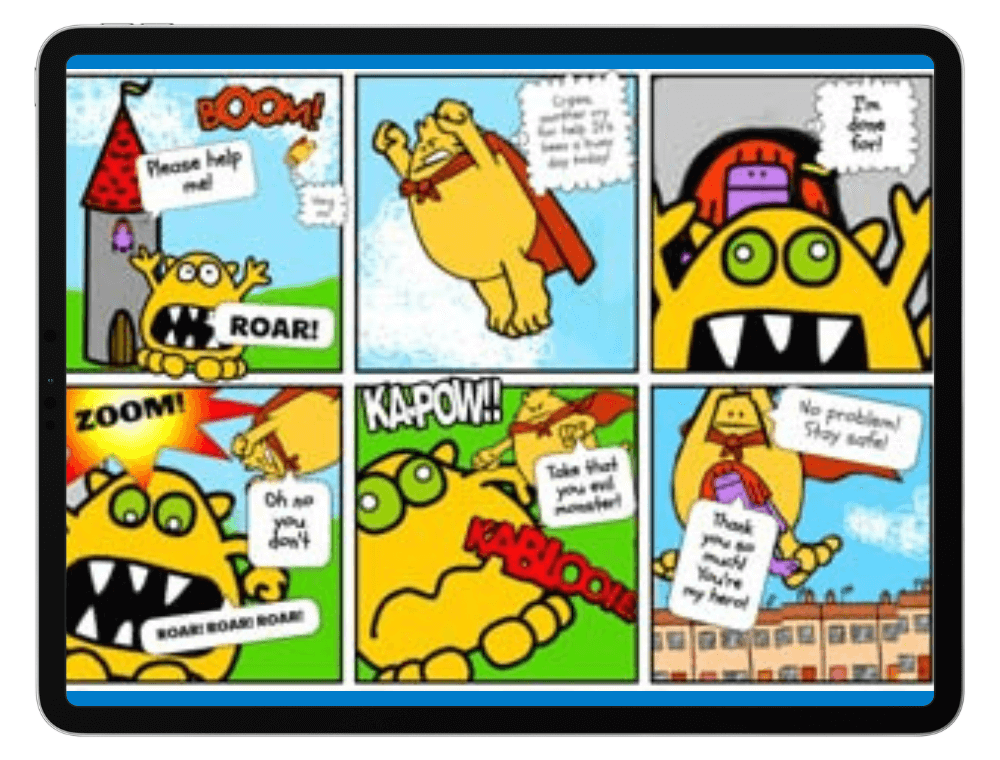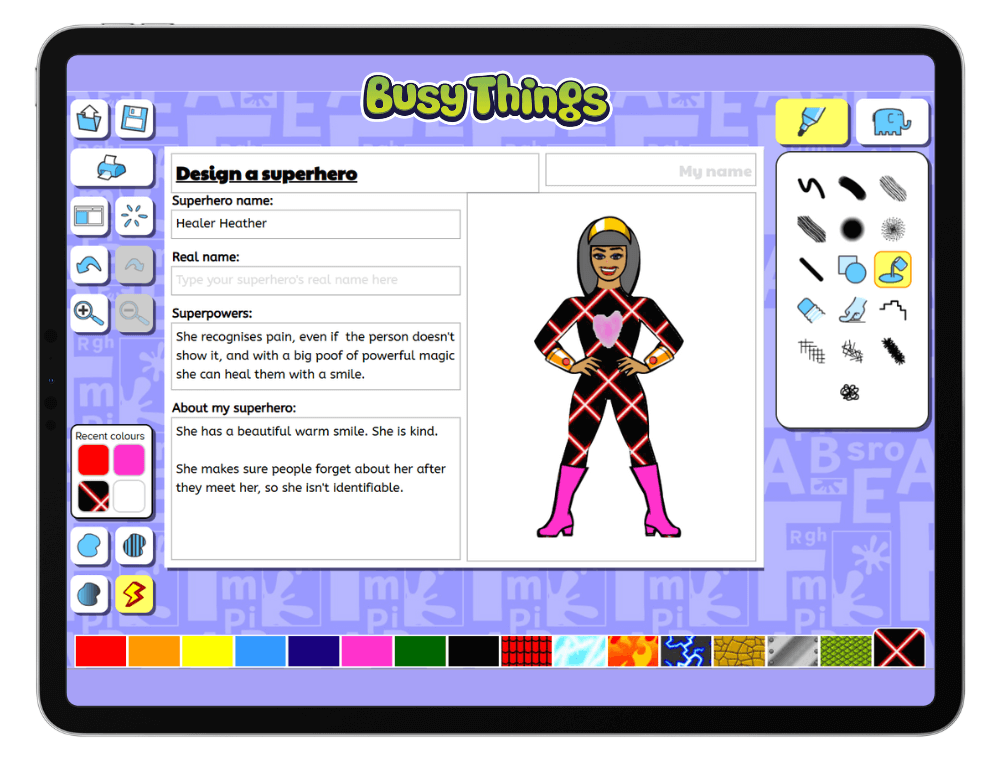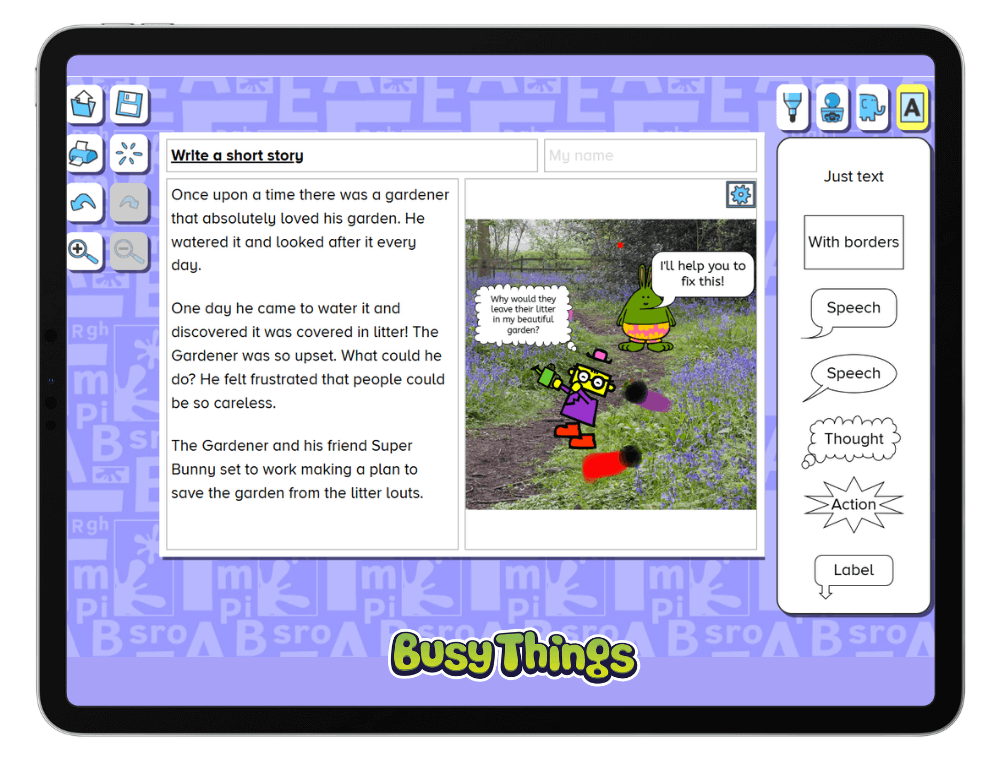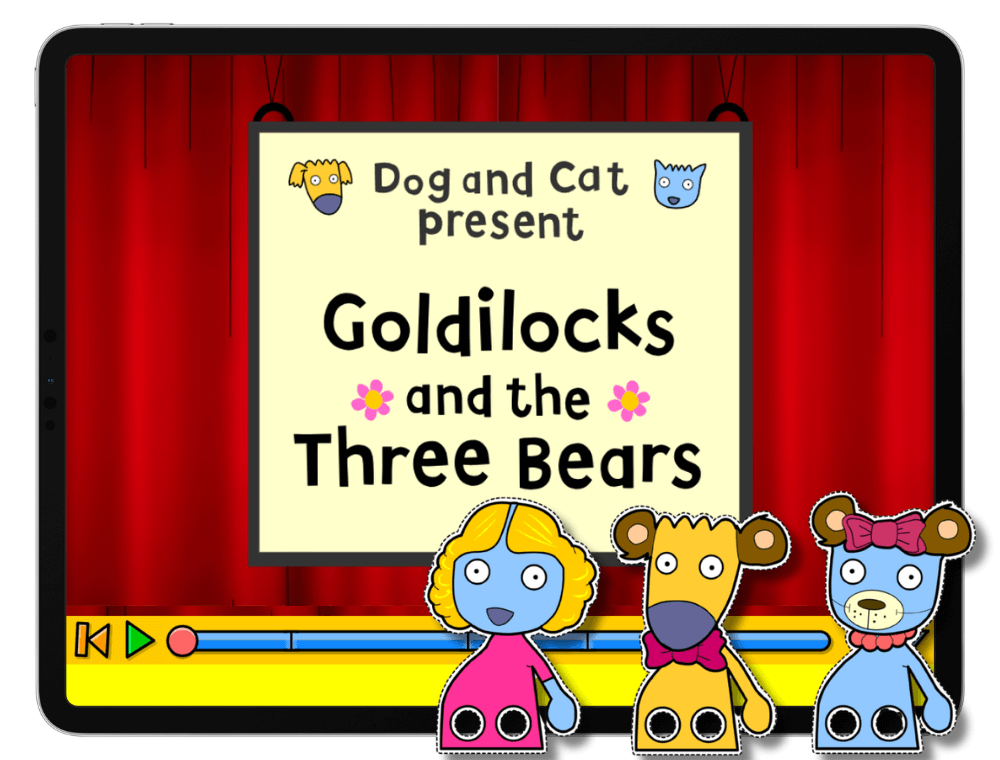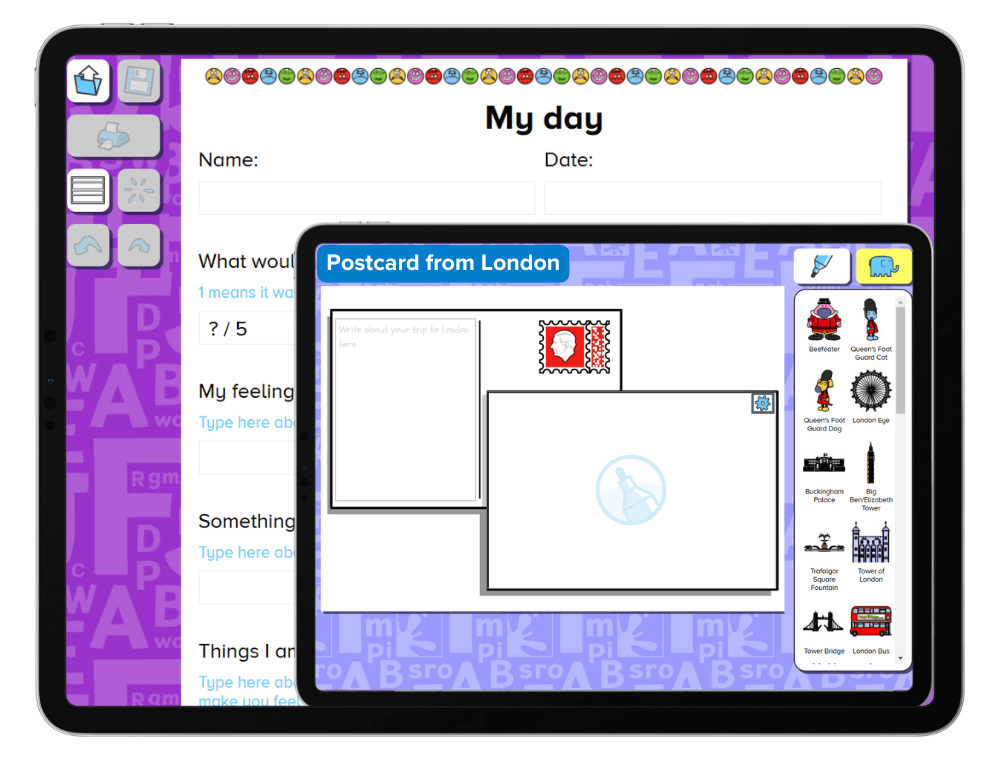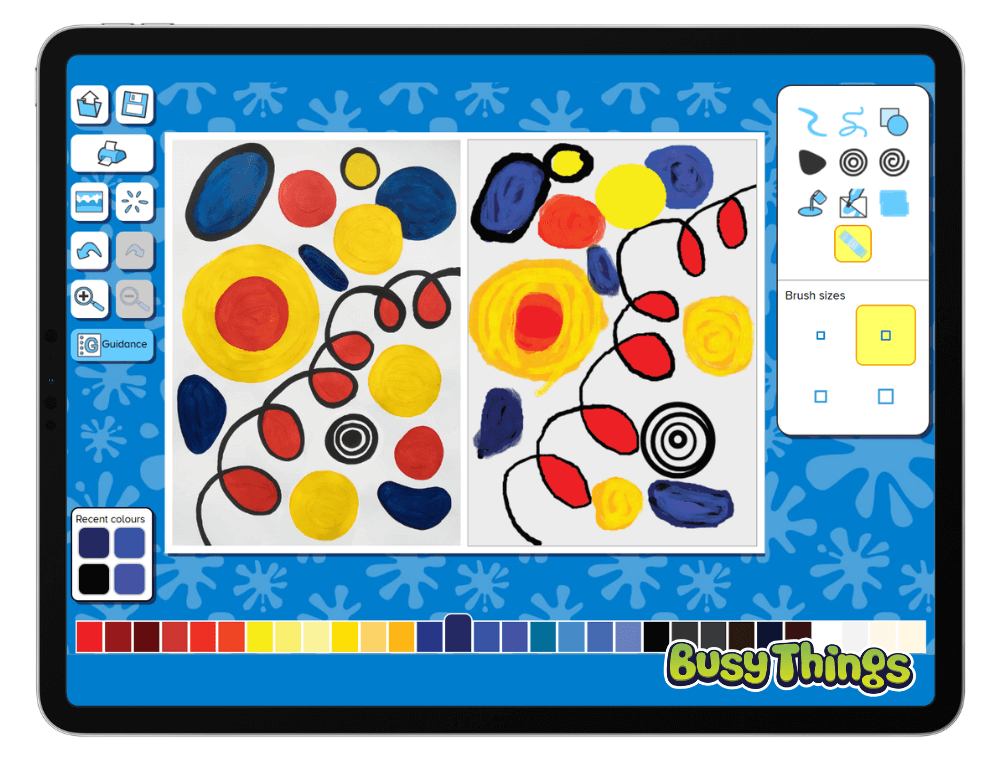How to Help Children Express Emotions Through Creativity incl. FREE Feelings Poster!
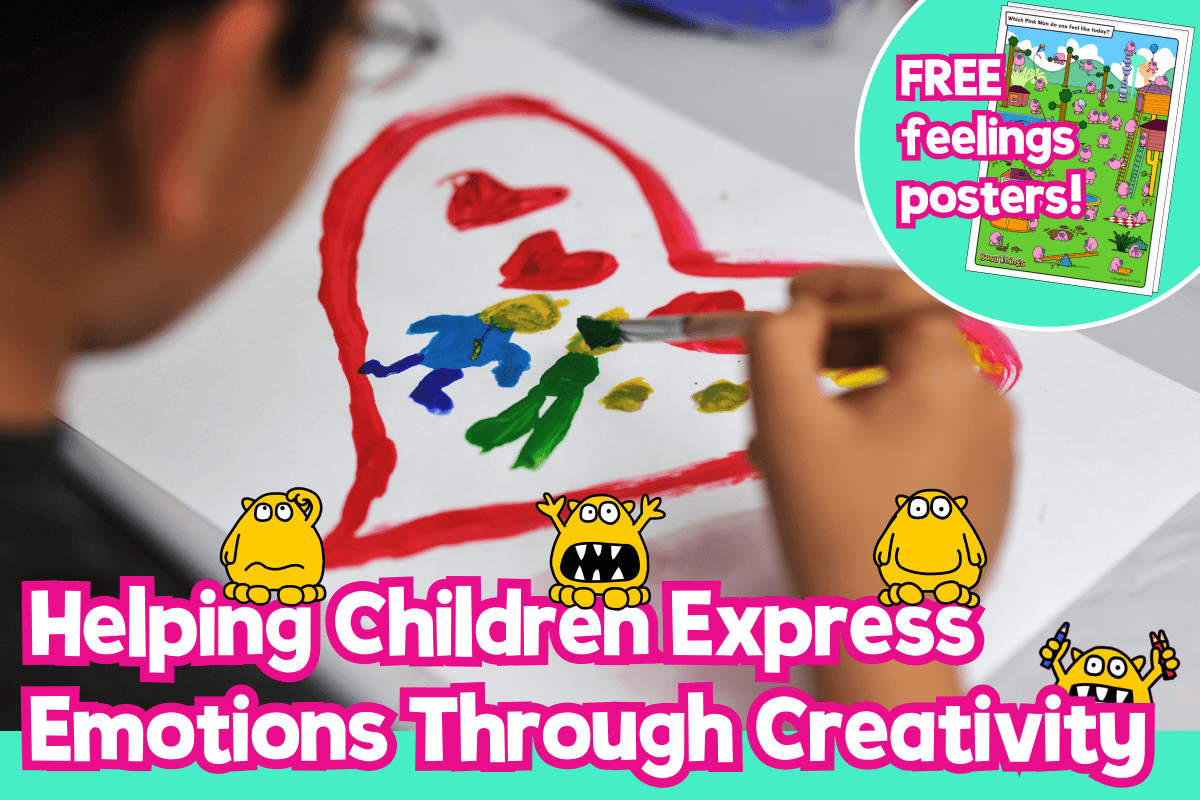
Ever had your child melt down over a broken biscuit but they’re unable to tell you why? Sometimes, words just don’t cut it. That’s where creativity comes in! Creativity is one of the best ways to help children express emotions when words don’t come easily.
Creativity provides a natural outlet for self-expression – whether they’re doodling their worries away, building an imaginary world, or acting out a story, creative play helps children to make sense of and to communicate their feelings.
In honour of Children’s Mental Health Week 2025 and its theme “Know Yourself, Grow Yourself,” this blog is full of easy, engaging ways to encourage your child’s creativity – plus, we’ve got a free printable to help spark conversations about emotions!
- How to Help Children Express Emotions Through Art
- Writing & Storytelling – A Creative Way to Express Feelings
- Exploring Emotions Through Role-Play
- How Creative Activities Build Emotional Confidence
- Free Exploring Feelings Poster!
1. How to Help Children Express Emotions Through Art
For many children (and adults!), expressing their emotions through words can be difficult. Creativity offers a non-verbal way to explore and process feelings. Drawing, painting, or writing stories can act as an emotional outlet, helping children understand and manage what they’re feeling.
Creative prompts to explore emotions:
- Feelings doodle challenge – Ask your child to fill a page with different emotions. How does ‘excited’ look? What about ‘frustrated? Let them explore emotions through colour and shape!
- Ask them to create a “feelings monster” – a character that represents how they’re feeling that day.
- Feelings weather report – Try asking: “If your feelings were a weather forecast, what would they look like?”. Let them turn emotions into a weather report – stormy scribbles, bright sunbeams, or a rainbow of mixed feelings!
- Music & mood painting – Play different songs and encourage your child to colour how each one makes them feel. You could use our our free mindful colouring sheets.
Activities to explore emotions on Busy Things:
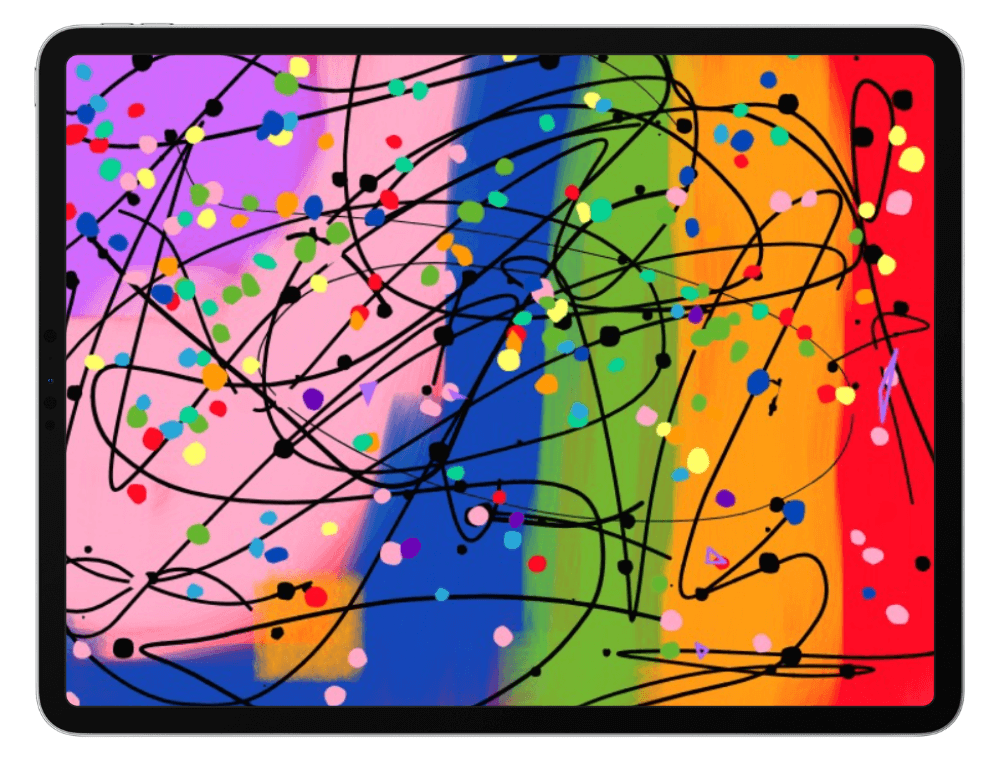
Abstract Expressionist Painting: Let your child ‘paint their feelings’ – will happiness be bright yellow swirls or little dancing dots? What does frustration look like? Sharp zigzags? Scribbly storm clouds?
Feelings Poster: featuring Busy Things’ iconic Pink Men showing a variety of emotions. Children can pick a character that matches how they feel and use it as a starting point for discussion. There’s also a colour-in version for a calming activity.
A version of this feelings poster is also FREE to download below…
2. Writing & Storytelling – A Creative Way to Express Feelings
Storytelling helps children process emotions through characters and imaginary worlds. Here’s how to encourage self-expression through writing: Storytelling is a fantastic way for children to explore their own experiences and gain self-awareness.
Try these storytelling prompts to explore emotions:
- Write a feelings journal – A simple daily diary where children write or draw about their emotions. Our free Mood Meter and Daily Journal Template is a great starting point for self-reflection.
- Create a ‘time I felt…’ book – Staple some paper together and help your child illustrate different moments they felt happy, sad, excited, or worried.
- Write a short story – encourage your child to write a short story about a character overcoming a challenge. What do they learn along the way? How do they feel at each stage? You could even turn their story into a mini book and illustrate it together!
- Dream up a talking feelings pet – Ask your child to invent a pet that helps with emotions. What does it look like? What advice would it give?
Storytelling activities on Busy Things:
Create a comic strip: Plan the beginning, middle, and end of a story. Add speech bubbles and sound effects to bring it to life! Remember to think about how the characters are feeling.
Design a superhero: What is their name? What are their powers? – Do they have a power linked to emotions like calming worries or spreading kindness?
Write a short story: Use our easy publishing tools to write and illustrate a digital story.
Bonus: children will be developing their typing and digital design skills too!
3. Exploring Emotions Through Role-Play
Imaginative play helps children act out different emotions in a fun, engaging way – developing empathy and emotional awareness. Here are some playful ways to encourage emotional expression:
Explore these imaginative play activities at home:
- Set up a ‘feelings shop’ – Gather small toys or objects to represent different emotions. Give your child pretend money and ask them to ‘buy’ a feeling and explain when they’ve felt it. You could also swap roles, with them being the shopkeeper giving ‘feelings advice’ to a customer!
- Dramatic storytelling – Act out a scene where characters face a tricky situation. “Your teddy bear has lost their favourite toy – how do they feel? What should they do?”
- Make an emotion mask – Cut out a mask shape and decorate it to show a specific feeling. Then, swap masks and act out different emotions together!
- Ask ‘what if?’ – Spark their imagination with open-ended questions. “What if you were a pirate searching for treasure, but you lost the map? How would you feel?”. If they’re playing ‘teacher,’ ask what they’d do if a student was feeling shy. If they’re pretending to be an astronaut, how would they react to discovering a brand-new planet? These small questions help them explore creative thinking and emotional reflection.
- Children can really get into character with our free printable costume props!
Using Role-Play to Help Children Express Emotions on Busy Things:
Goldilocks & the 3 Bears finger puppets – Act out the classic tale and the character’s emotions.
Write a postcard / journal entry – Step into a character’s shoes and write a postcard about their adventures. What are they feeling?
4. How Creative Activities Build Emotional Confidence
Creative activities allow children to try new things, solve problems, and see their efforts come to life – all of which boost self-esteem and help children feel more confident in expressing themselves
Try these ideas:
- Feeling collages – Cut out magazine images or draw pictures that match different emotions. Arrange them into a big, colourful ‘feelings map.’
- Make an ‘anything goes’ art station—no rules, no pressure, just a space to experiment. Give them unusual materials like foil, fabric scraps or leaves for extra creative fun!
- Emotions sculptures – Challenge your child to a sculpt off – with play dough or recycling materials. Choose an emotion theme – ‘happy,’ ‘worried,’ or ‘excited’- set a timer and create! There is right or wrong, let imaginations go wild and see what creations come to life.
- Create emotional confidence badges! Cut out badge shapes and decorate them together with things that represent emotional confidence such as courage, positivity, perseverance, empathy, kindness and ingenuity. Present a badge in your household when these traits are shown, wear them with pride!
Creative activities on Busy Things:
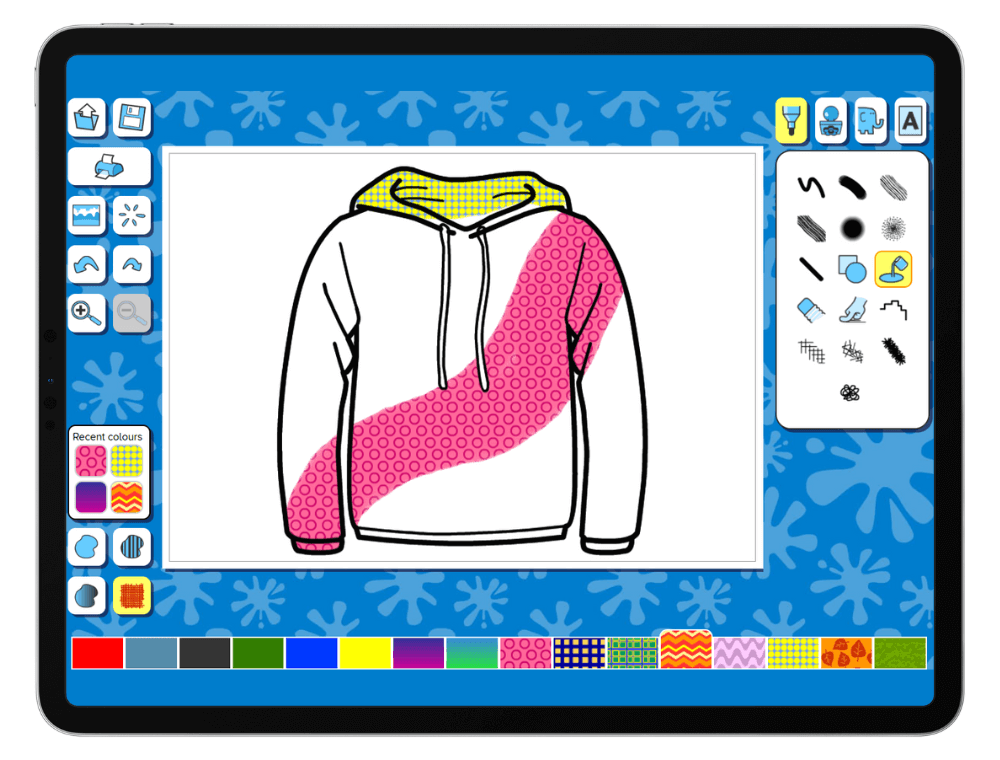
Fashion Fun – Design a clothing range and explore creativity self-expression through style.
Make a Masterpiece – Try famous painting techniques inspired by Monet, Van Gogh, Picasso, Pollock, Warhol, and more.
5. FREE Exploring Feelings Poster!
Need a fun way to help your child open up about their feelings? Our FREE Feelings Poster makes it easy!
Spark a conversation about emotions with our colourful poster featuring Busy Things’ Pink Men or use the outline version as a calming colouring activity.
Download A fun way to explore emotions through art!
You may also be interested in our other free children’s wellbeing resources:
Journaling and Goal Setting Templates – Help children to build resilience and reflect on their feelings.
FREE Mindful Colouring Pages – Perfect for encouraging focus and relaxation.
Download them all today and build your own mindfulness toolkit for emotional well-being.
Let’s Get Creative: Express, Explore & Build Confidence!
Encouraging creativity is a simple but powerful way to help children express emotions and build confidence. Whether through drawing, storytelling or imaginative play, these creative activities will encourage emotional awareness and confidence.
So, next time your child is struggling to explain their feelings, why not reach for the crayons, a storybook, or their favourite teddies? A little creativity might help them express more than words ever could!
